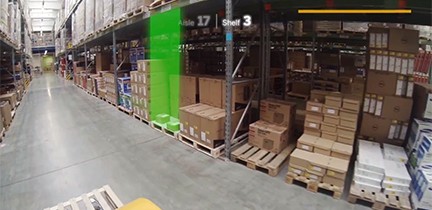Wearable technology can offer increased efficiency and reduced errors in order fulfillment
Kevin Gue, Editor-in-Chief of the recently published U.S. Roadmap on Material Handling and Logistics, recently wrote a blog on how Google Glass can be used to facilitate order fulfillment.
The blog includes a video that very impressively demonstrates how Google Glass directs a worker to pick the items in the order even going as far as illuminating the exact location by a green rectangle on the Glass. Glass also helps the worker with the shortest route to pick the items in the order.
Recently Active Ants, an e-fulfillment company in the Netherlands, which ships products for 50 online stores, gave Google Glass to its stock pickers. During a week-long experiment, they found that giving Glass and a custom-built stock app to two of these warehouse workers reduced their error rate by 12% — and increased their speed at stock picking by 15%.
Translate that to a major fulfillment operation, such as Amazon, and you could be talking millions of dollars in savings.
Benefits of Glass Technology for Order Picking
Traditionally, order pickers walk around with pick lists specifying products, locations and quantities. This information is now displayed on Google Glass. The benefit here is that both the picker’s hands are now free to access products in the shelves.
The second benefit is that lists no longer need to be printed, signed and bound. The third and probably the biggest advantage is the time saved by sending orders directly to the Google Glass, without first printing, signing and binding them. The final benefit is error reduction. Since the orders appear one by one on the Glass, orders cannot be mixed or forgotten. The traditional paper pick list contains a long list of all orders, which increases the chance of mixing up or missing orders.
The U.S. Roadmap for Material Handling and Logistics concluded that wearable computing offers the industry a significant opportunity to improve operational control and reduce costs.
There’s only a handful of firms taking advantage of smart glasses right now, but as more testing is done, the technology will gain wider acceptance.
Click here to read Kevin’s blog and view the video.





